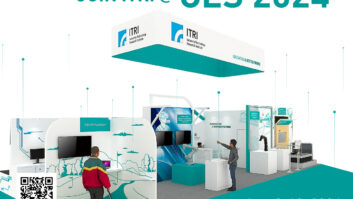The 51st CES is now behind us, and the preliminary data shows that the numbers were strong. According to the Consumer Technology Association (owner, producer and host of CES), 3,900 exhibitors attended the show, representing more than 150 countries, with an estimated 180,000 visitors. The show covered more than 2.5 million square feet of floor at the Las Vegas Convention Center.
While the Exhibit floors were packed with attendees, CES is marketed as the “Global Stage for Innovation.” Using innovation as the measurement of success, did CES 2018 exceed or fall short of expectations?
Watch: 10 Things You Might Have Missed At CES
One way to gauge innovation is to look at top innovations from CES shows and see how 2018 stacks up. You’ll likely recognize most of the following brands and concepts.
1975 – Atari Pong
1978 – First-ever home VCR (Philips)
1981 – CD Player (Sony)
1985 – Nintendo introduced their first entertainment system
1992 – Apple Newton PDA
1996 – DVD format
1999 – TiVo
2001 – Xbox
2004 – Blu-Ray (Sony)
2006 – IPTV
2010 – 3D-enabled HDTV
2012 – DVR
2015 – Sling TV
Related: One-Click Access To Our CES Hub
While the number and categories of products at CES 2018 are too numerous to name, there are certain categories that did draw a lot of interest. Smart home appliances, AI, VR, drones, wireless charging and voice-activated products abounded. While the product presentations were slick, most of these ‘innovations’ were but incremental improvements on technologies created years earlier.
When the dust settles, and people look back at 2018, the best-remembered products will likely be voice-enabled assistants like Amazon Alexa and Google Home, with armies of manufacturers working tirelessly to integrate their technology with these solutions. Of course, the TVs were bigger and better, the computers were faster, and many new products were integrated with others to improve user experience. But these are not genuine innovations that disrupt the marketplace.
One of the major buzzwords this year was ‘IoT’ or the ‘Internet of Things,’ a term actually coined in 1999 and a darling of CES shows of the last five years. But the ways in which it is being applied to consumer electronics are getting downright silly. As one show reviewer aptly put it, ”The last thing I need to see at CES is another device that will enable me to do the dishes while sitting on the toilet!”
Another takeaway from this year’s shows was just how many manufacturers were improving the same types of products with the very same technologies. Sure, IoT offers lots of promise, but I don’t need anywhere/anytime access to my dishwasher. To me, a truly worthy technological innovation would be to create a dishwasher that actually got your dishes cleaner.
This type of group think — connect everything to the Internet, introduce an app, tie into voice assistants, etc. — was pervasive at CES. Few companies seemed to be taking real risks or pushing visionary agendas. True, taking such risks could mean the end to one’s career and in certain cases the loss of an entire division or company, but it can also pay rich dividends and fundamentally alter the nature of our media experiences. That’s what CES used to be, but now it seems dominated by companies that are unwilling to think beyond the next quarter’s P&L. Put another way, they are not willing to innovate; to take the risks necessary to create a genuine revolution. (An analogous situation happened in Hollywood in 2017 where most “Tent Pole” releases were sequels of successful franchise films. Who needs to innovate when you can make a ton of money just repeating a simple formula?)
But there is some room for optimism. The creative spirit that has long defined CES remains, with many companies investing in innovative technologies, especially on the infrastructure side. For consumer electronics per se, however, the story is incremental evolution, nothing more.
While 2018 CES was relatively bland and lacked for a big announcement to help drive buzz, I cannot wait for 2019. I believe 2018 will be an exciting year, with a handful of significant technology breakthroughs and more risk taking by manufacturers. As well, several major mergers and acquisitions are likely this year, which may give larger companies wider license to invest in cutting-edge technologies, helping spur innovation.
A 20-year veteran media executive, Rob Silvershein’s success in today’s competitive media environment is a direct result of his unique experiences spanning traditional, emerging, and startup media platforms. He is an accomplished strategist and spends most of his time advising media companies on how to structure themselves for long term success.













